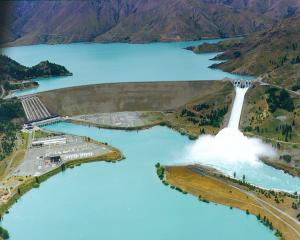The North Otago drought has worsened, with ''severely'' dry soil levels and little chance of rain meaning large numbers of stock may need to be removed by Christmas.
Yesterday's strong hot winds were a cruel twist for the region's farmers, sucking what little moisture was left out of the soil, Federated Farmers said.
Temperatures at Oamaru hit 22degC yesterday while winds gusted to 94kmh.
In a weekly Niwa report on the country's soil moisture levels, northeastern Otago's soil levels were classed as ''much drier to severely drier than normal for this time of year'', while sections of eastern Canterbury were suffering the same fate.
Over the past week, that area of ''severe to extreme dryness'' had grown slightly, the report said.
The outlook for the next week was grim for the region, with soil moisture levels ''likely to decrease over the next seven days''.
Federated Farmers North Otago president Richard Strowger it was ''the driest North Otago's been in the last 10 years'', and yesterday's hot gale-force winds were only making matters worse.
''We've got a howling nor'wester at the moment so whatever moisture we've got is disappearing pretty quickly.''
The region had received ''no substantial rain'' for 12 months, and that followed what was already a ''very dry'' period a year ago, he said.
But while the region had ''deep soil moisture'' reserves 12 months ago, it did not now.
That meant stock would need to be progressively removed from the land unless enough rain fell, and fell quickly, he said.
Yet that was unlikely with a well-publicised El Nino summer expected to bring drier than normal conditions to North Otago.
''People will continue to get rid of any extra stock,'' he said.
Cattle were likely to be the first to go, while any stock ''that's not feeding something that's young'' would be next in line.
Farmers would need to ''hunker down with their lambs'', making sure the mothers had enough feed to continue producing milk until the lambs could be weaned.
''They'll try and grow the young stock big enough to wean off mum.''
Many of the region's farmers started lambing in September and were now starting to run out of feed, he said.
''It's not the best. But the farmers in North Otago understand this is North Otago, and they'll have contingencies in their plans.''
But those contingencies couldn't last indefinitely, he said.
''Look, if it doesn't rain before Christmas, most stock other than what's [on irrigated land] will be down to nothing.''
Buying in feed was an option, but feed needed to be of a high quality for ewes feeding their young.
Palm kernel was one option, while high quality silage would also work, though that would cost twice as much as palm kernel.
Farmers did not have access to Government-provided financial backstops in times of drought, he said, and the ramifications for the region were significant.
''For a town like Oamaru, it's catastrophic. It's not just the farmers; everyone's affected.''
Those working as silage contractors, shearers, tractor repair people, freezing workers and more would have reduced work or no work if the drought continued, he said.
Niwa's October-December seasonal climate outlook for coastal Canterbury and east Otago gives a 45% probability of rainfall in the region being below average, and just a 15% probability of rainfall being above average.
MetService's monthly rainfall outlook for October forecasts ''below normal'' rainfall for eastern parts of the South Island.












